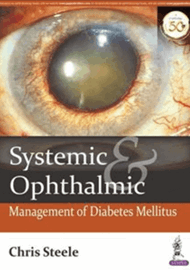Chris Steele, the Head of Optometry in Sunderland Eye Infirmary, has a wealth of experience and knowledge in retinal pathology and has recently published what is now his second book on diabetes. This has been a major undertaking, taking three years to complete, however, is now published and available in e-book format.
Chris takes a new approach in this book, in spotting that there was a lack of a text which could both enhance knowledge of eye care professionals on the systemic management of diabetes, as well as enhancing the knowledge of general clinicians on the ocular manifestations and treatment of this disease. In other words, a complete all round text relevant and accessible to a range of clinicians and trainees involved in the care of diabetic patients. Optometrists, ophthalmology trainees, orthoptists, ophthalmic nurses, retinal screeners, GPs, diabetic nurse practitioners and students can all tap into this reference source.
Some of the early statistics set out by Chris in this book regarding the scale of the diabetic ‘global healthcare emergency’ are fairly sobering. Worldwide, diabetes claims a life every six seconds, with half of those deaths in the under 60s. Unfortunately with human patterns of urbanisation, more sedentary lifestyle and increased dietary sugar intake, this will only increase unless better awareness, education and clinical treatment systems are put in place.
The past 10-15 years have seen huge changes in diabetic care, both systemically and from an ophthalmic perspective. This book sets out a clear insight into both systemic management and ophthalmic management strategies, which are intrinsically linked. The chapters guide us through the epidemiology and pathophysiology of diabetic retinopathy, screening and, crucially, how patients are managed. The importance of good systemic control is strongly tied in with reducing the risks and management of ocular complications.
An up to date account of the various treatment modalities such as laser, surgery and most recent medical treatment is given, as well a description of the new imaging modalities used in diabetic retinopathy.
For any clinician or student wanting to learn about diabetes or to consolidate their knowledge with an up to date and incredibly well-rounded text, this is a really useful book and I’m sure it is going to have a very positive impact on this major healthcare challenge.





